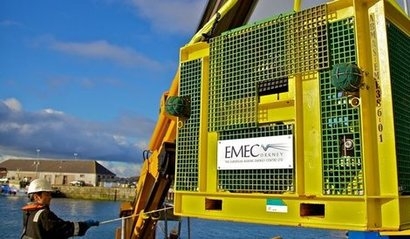
The new surveys were carried out as part of SSEN’s proposal to provide a transmission connection to the main GB transmission system. The collaboration opportunity came to light when EMEC contacted SSEN requesting access to the data to supplement their knowledge of the seabed at their grid-connected wave test site at Billia Croo.
Orkney has some of the highest wave energy potentials in Europe, thanks to the North Atlantic Ocean. Various prototypes are being tested at EMEC to learn how best this energy can be captured. SSEN are providing EMEC with updated bathymetry and side-scan sonar, which have been captured with state of the art technology providing high resolution 3D views of the seabed. This is supplemented with sub-bottom profiling which will let developers planning to test at EMEC better understand how deep the sand is to support mooring design and configurations.
“We recognise that Orkney is home to some of Europe’s greatest renewable resources and there is a clear need to provide a transmission reinforcement to allow Orkney to realise its vast renewable potential” said SSEN Project Manager, Peter Jordan. “As a responsible developer, we want to ensure that our proposals demonstrate value to local communities and stakeholders and I am glad that we were able to provide this data to facilitate further renewable energy in Orkney.”
John Skuse, Operations and Maintenance Manager, EMEC, added that the updated bathymetry and site profiling data will allow developers to better optimise their device and mooring designs with the confidence that they will match seabed conditions. This will deliver time and cost savings for developers installing new devices in the coming months and years.
Image: An integrated monitoring pod being tested at EMEC
For additional information:

